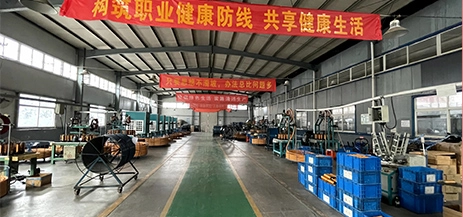Replacing the Power Steering Hose on Your Ford Vehicle Made Easy
Replacing the Power Steering Hose on Your Ford A Comprehensive Guide
Power steering systems have revolutionized the way we drive, providing effortless control and making maneuvering a vehicle much easier. However, like any automotive component, the parts that make up the power steering system can wear out over time. One of the key components is the power steering hose, which can develop leaks or become damaged, leading to a loss of fluid and ultimately, steering failure. This article will help guide you through the process of replacing power steering hoses on your Ford vehicle, ensuring safe and efficient driving.
Understanding the Importance of the Power Steering Hose
The power steering hose carries hydraulic fluid from the power steering pump to the steering gear, helping ease the effort needed to turn the steering wheel. If this hose begins to leak, drivers may notice increased steering effort, whining noises, or fluid spots on the ground beneath the vehicle. Given the critical role the power steering hose plays in vehicle operation, it's important to address any issues promptly.
Tools and Materials Needed
Before beginning the replacement process, gather the following tools and materials
- Jack and jack stands or ramps - Wrench set - Screwdriver set - Fluid catch pan - Replacement power steering hose - Power steering fluid - Safety goggles and gloves
Step-by-Step Replacement Process
1. Safety First Start by ensuring the vehicle is parked on a flat surface. Engage the parking brake and turn off the ignition. Always wear safety goggles and gloves to protect yourself from hydraulic fluid and debris.
2. Prepare the Vehicle Lift the front of the vehicle using a jack and secure it on jack stands or drive it onto ramps for easy access to the underside. Make sure the vehicle is secure before proceeding.
ford power steering hose replacement

3. Locate the Power Steering Hose Identify the power steering pump, usually located on the engine's front side, and trace the hose leading to the steering gear. You may need to remove protective covers or shields to gain better access.
4. Drain the Power Steering Fluid Place a fluid catch pan under the power steering pump. Disconnect the hose, allowing any remaining fluid to drain into the pan. Note that some fluid will leak out once disconnected.
5. Remove the Old Hose Using the appropriate wrench size, loosen and remove the hose connections at both the power steering pump and the steering gear. Take care to note how the old hose is routed, as you'll need to replicate the same routing for the new hose.
6. Install the New Hose Carefully position the new power steering hose in the same path as the old one. Connect the hose to the power steering pump, ensuring it’s tightened securely. Then, connect the hose to the steering gear, again making sure it's snug to prevent leaks.
7. Re-fill Power Steering Fluid Once the hose is connected, fill the power steering reservoir with new fluid. It’s essential to use the fluid specified in your Ford owner's manual, as different models may have different requirements.
8. Bleed the Power Steering System To remove any air bubbles trapped in the system, start the engine and turn the steering wheel fully from left to right several times. Check the fluid level again and add more if necessary.
9. Check for Leaks With the engine running, inspect the hose connections for any leaks. If you notice fluid seeping, tighten the hose fittings as needed. It's crucial to ensure a tight seal to avoid future leaks.
10. Lower the Vehicle and Test Drive Once everything is secured and you’ve confirmed no leaks, safely lower the vehicle. Take it for a short test drive, monitoring the steering response and checking for any unusual noises or fluid loss.
Conclusion
Replacing the power steering hose on your Ford vehicle is a manageable task if approached methodically. Regularly inspecting your vehicle’s power steering system can prevent more significant issues down the road. Should you encounter difficulties during the process, don't hesitate to consult a professional mechanic for assistance. By ensuring your power steering system is in top shape, you'll enjoy a smoother and safer driving experience.
-
Ultimate Spiral Protection for Hoses & CablesNewsJun.26,2025
-
The Ultimate Quick-Connect Solutions for Every NeedNewsJun.26,2025
-
SAE J1401 Brake Hose: Reliable Choice for Safe BrakingNewsJun.26,2025
-
Reliable J2064 A/C Hoses for Real-World Cooling NeedsNewsJun.26,2025
-
Heavy-Duty Sewer Jetting Hoses Built to LastNewsJun.26,2025
-
Fix Power Steering Tube Leaks Fast – Durable & Affordable SolutionNewsJun.26,2025

